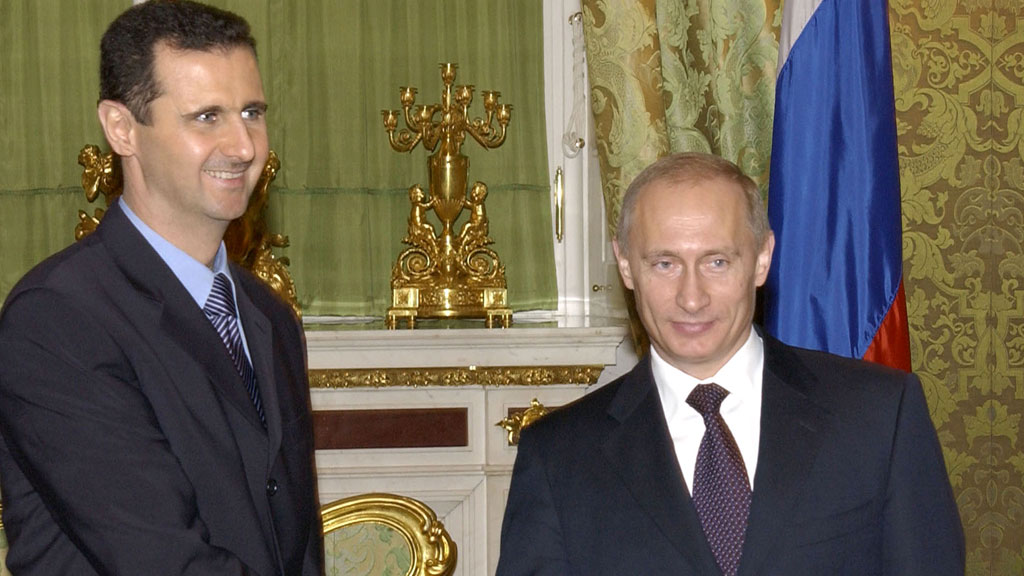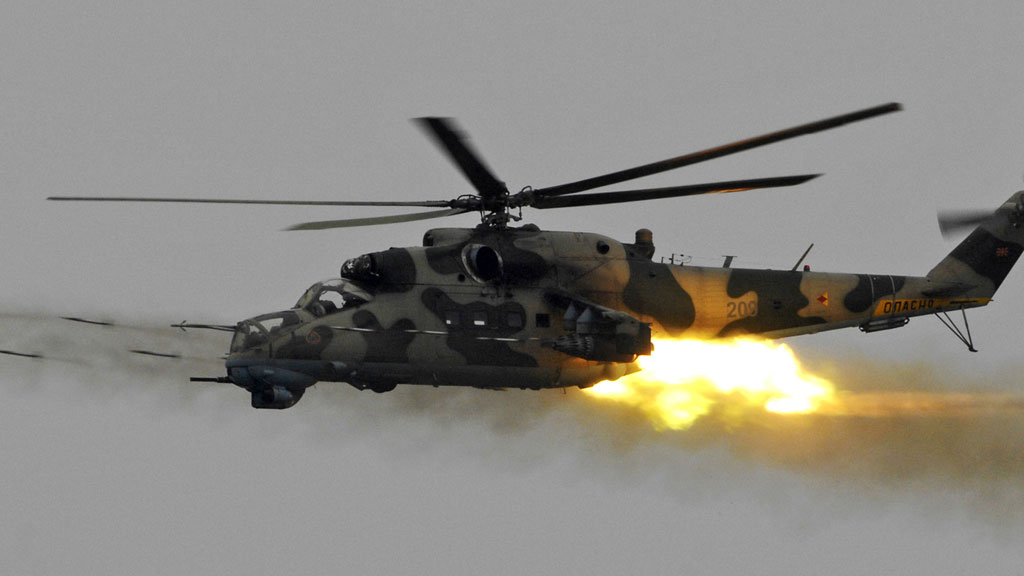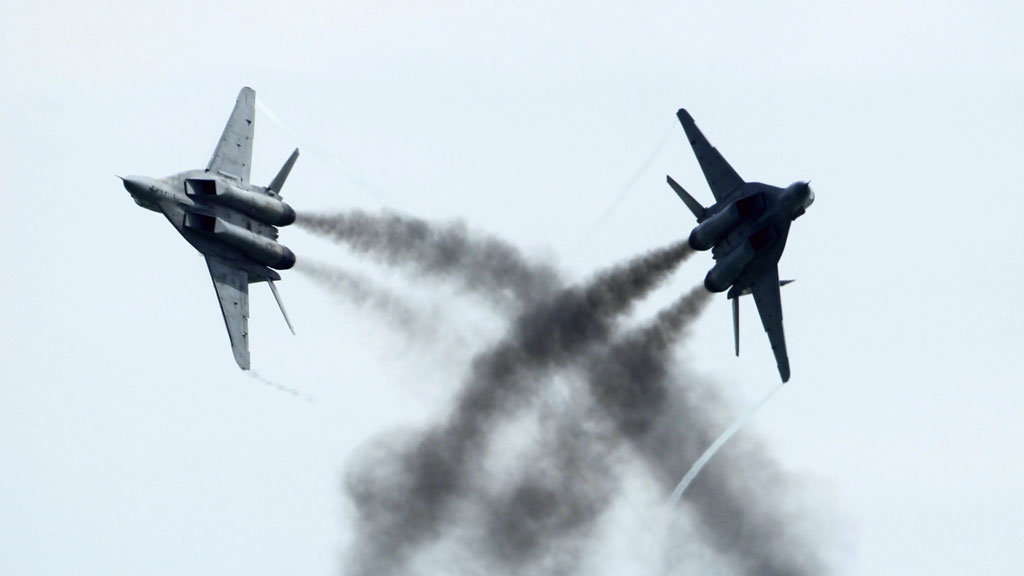How Putin’s Russia props up Assad’s military
Russia has been Syria’s main supplier of military hardware for the last 60 years – which means that if the US attacks Syria, it will face Russian missiles and fighter aircraft.

For the last 60 years Russia has been Syria‘s main weapons supplier, selling it everything from fighter jets to tanks and a formidable array of air defence systems.
Syria’s current arsenal would present significant problems to any attacking western attacking force. Its air defence missiles, in particular, would make establishing a no-fly zone extremely tricky, and any manned air attack would probably result in western casualties. This is certainly not Libya.
Reliable Russia
Throughout the 1980s Soviet Russia and its satellites sold Syria hundreds of the fighter aircraft types that have been used by the regime to attack its own people. These include fighter aircraft such as the L-39, Mig-23 (pictured below) and the Su-22, as well as the Mi-24 attack helicopter (also pictured).
Between 2008 and 2012 Russia supplied 71 per cent of Syria’s arms imports, Iran provided 14 per cent and Belarus 11 per cent, according to the Stockholm International Peace Research Instiute (Sipri).
Syria built up its chemical weapons significantly in the 1980s as it sought a potential deterrent to its rival neighbour Israel, and was making its own by the 1990s.
There is a pipeline of resupply of weapons going from Russia to Syria, possibly with Iran involved. David Butter, Chatham House
Openly available information reveals that North Korea has made a relatively small contribution to Syria’s arsenal over the decades, selling scores of missiles up to the end of the 1990s, while stalwart ally Iran sold only a few medium- and long-range missiles up to 2011, says Sipri.

In reality, secret weapons transfers may greatly exceed these estimates, while Iran’s true contribution, as military sugar daddy to President Bashar al-Assad, has been far greater.
By 2005, Syria had racked up Russian debts of $13bn on weapons transfers alone. Russia wrote off $10bn, while the remainder was put into an account to pay energy subcontractors employed by Russia, according to David Butter, associate fellow of the Middle East and North Africa programme at Chatham House.
Russia has already sold S-200 long-range missiles to Syria and was due to supply the more advanced S-300 version, but in the face of probable international displeasure suspended the multi-million dollar sale while Syria’s internal crisis rages.
So how could Syria possibly afford to build up such a formidable military force? And why is Russia so happy to keep supplying weapons to Syria for little or no payment?
Iran’s big bucks
Huge financial backing from Iran provides part of the answer, along with Russia’s determination to keep Syria as a regional ally for strategic reasons.
“Syria has never paid for its weapons from Russia – it doesn’t have any money,” Mr Butter says. “There is a pipeline of resupply of weapons going from Russia to Syria, possibly with Iran involved in that, but it’s pretty obscure.”
Russia’s willingness to sell weapons to states is often tied up with lucrative energy deals, whether that involves direct sale or helping to exploit a country’s natural resources.
By contrast, Syria’s energy programmes in global terms “are not that big, but may have been a way of parcelling up work for Russian contractors,” he adds.
Syria has been one of Russia’s cold war allies since the 1950s, and Russia has a long history of training Syrian forces “going back decades”, Butter says. Syrian and Russian officers often find spouses from each other’s countries, ensuring ever closer bilateral relations, he adds.

Sales of significant weapons to Syria such as fighter aircraft from the UK and US stopped in the mid 1950s, while for a short period in the late 1970s France supplied some light helicopters and hundreds of anti-tank missiles.
At the turn of the 1980s Libya sold about 30 second-hand fighter aircraft to Syria, but the Soviet Union and modern Russia have otherwise been the predominant supplier.
Syria has never paid for its weapons from Russia – it doesn’t have any money. David Butter, Chatham House
The UK and US are now convinced that the chemical weapons used on 21 August were deployed by the Syrian regime, killing over 1,400 people according to US Secretary of State John Kerry.
Syria’s initial chemical weapons supplier in the early 1970s was suspected to be Egypt, but it also sought out ingredients for powerful nerve agents from western Europe, according to the Nuclear Threat Initiative, a non-profit group which aims to reduce the spread of weapons of mass destruction.
By 1990 US officials said that Syria had converted several agrochemical factories into sarin production facilities, and in 1997 Syria was thought to be capable of producing sarin, mustard, and potentially VX.
The west hopes that whatever congress decides on military action in Syria, the regime does not use more chemical weapons. But whatever shape an eventual US attack takes, it will be mostly Russian equipment that confronts them.
-
Latest news
-
Ex-Trump lawyer Michael Cohen testifies at hush money trial3m

-
Racial hate speech laws being ‘weaponised’ warns National Black Police Association7m

-
‘Hard to believe so many women going through such horrors’, says woman whose baby daughter was stillborn8m

-
Damning report condemns ‘shockingly poor’ UK maternity services12m

-
People ‘expecting the West to stand by Georgia’, says opposition party leader5m

-




